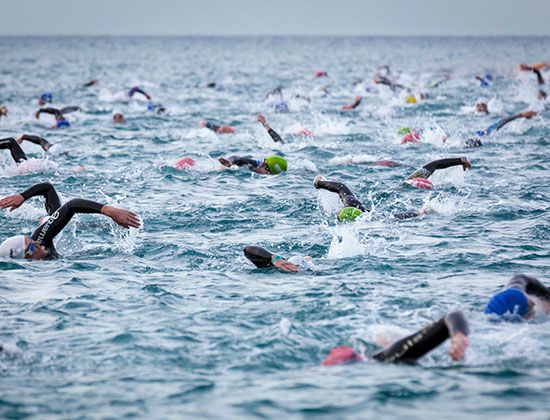The ultimate challenge? Injury risk in triathlons
15 June 2018
Is it possible to engage in the ultimate physical test of endurance and keep safe and free from injury?
Want to give it a Tri?
Although it may seem like a relatively new sport to the uninitiated, only becoming an Olympic sport in 2000, the modern triathlon has roots that go as far back as the 1920s – with the first official triathlon being run in San Diego in 1974. It goes without saying that it’s the most punishing endurance discipline in sports – the race the Brownlee brothers ran was at Olympic level, which consists of a 1500m swim, a 40km ride and a 10km run. And that pales in comparison to the Ironman triathlon (3.9km swim, 180km ride and a marathon).
The only certainties regarding the triathlon are that it attracts the most determined and alpha of athletes and the chance of incurring an overuse injury is high. In a recent study in the British Journal of Sports Medicine, researchers studied 875 triathletes taking part in the Norseman Xtreme Triathlon, following them through their training. Overuse injuries affected 56% of those taking part, with the knee, Achilles tendon and back being the most commonly affected sites. Only 4% registered acute injuries.
However, research seems to indicate that – compared to single-sport endurance athletes – injury risk is lowered because stress is dissipated more evenly across all the muscles and joints of the body. The combined practice of running, cycling and swimming, typically corrects muscle imbalance.
Three common triathlon injuries
Chondromalacia Patella
Otherwise known as Runner’s Knee, this ailment is obviously common amongst long-distance runners – but it’s also very common amongst the cycling community. Excessive, repetitive force on the cartilage underneath the kneecap causes it to soften, meaning that instead of it gliding smoothly over the femur, it rubs roughly over it. Hill climbs are a notorious culprit here: riders are advised to get higher in the saddle and stand more while climbing.
Achilles Tendonitis
A prolific overuse injury, which causes pain in the posterior calf. Worn-out and poor-fitting shoes are one of the most common causes of AT, as well as shoes that haven’t been fully broken in yet. For cyclists, the most regular causes range from the bike cleat position being too far forward and cold and wet conditions, leading to soggy and inclement socks.
Swimmer’s Shoulder
Most triathlon injuries occur on the road or in the saddle: the swimming element is usually seen as an easing-in phase, albeit a long, tough one. As practically every triathlete swims freestyle, they take on board repetitive overhead motion which can cause micro-trauma in the shoulder area if the swimmer has poor technique.
While all three ailments can be at least pacified with RICE – Rest, Ice, Compression and Elevation – they can all lead to serious downtime in the long run.
Identifying factors that increase the risk of incurring injury is key: increasing age; a history of previous injury; poor technique, and biomechnical imbalance, all play a significant role.
If you do incur an overuse injury then returning to training too early can increase the risk of re-injury or developing a chronic and potentially debilitating problem. Seek expert opinion the moment you notice a strain or ache to increase your chances for successful and long-term triathlon participation.


